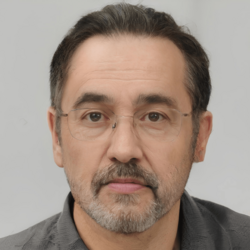President of the Soviet Union (TheodoresTomfooleries): Difference between revisions
Jump to navigation
Jump to search
m (upd.) |
mNo edit summary |
||
| Line 1: | Line 1: | ||
{{Infobox official post | {{Infobox official post | ||
| post = Chairman | | post = Chairman | ||
| body = the [[ | | body = the [[Presidium of the Supreme Soviet (TheodoresTomfooleries)|Presidium of the Supreme Soviet]] | ||
| native_name = {{lang|ru|Председатель Президиума Верховного Совета}} | | native_name = {{lang|ru|Председатель Президиума Верховного Совета}} | ||
| flag = | | flag = | ||
| Line 23: | Line 23: | ||
| appointer = Supreme Soviet | | appointer = Supreme Soviet | ||
| termlength = 5 years | | termlength = 5 years | ||
| constituting_instrument = | | constituting_instrument = {{wp|1977 Soviet Constitution}} | ||
| precursor = {{wp|Central Executive Committee of the Soviet Union}} | | precursor = {{wp|Central Executive Committee of the Soviet Union}} | ||
| formation = 17 January, 1938 | | formation = 17 January, 1938 | ||
| first = {{wp|Mikhail Kalinin}} | | first = {{wp|Mikhail Kalinin}} | ||
| abbreviation = | | abbreviation = Chairman of the Presidium | ||
| unofficial_names = President of the Soviet Union | | unofficial_names = President of the Soviet Union | ||
| deputy = | | deputy = | ||
}} | }} | ||
The Chairman of the Presidium of the Supreme Soviet ({{wp|Russian language|Russian}}: Председатель Президиума Верховного Совета; {{wp|Romanization of Russian|tr.}} {{transliteration|ru|Predsedatelʹ Prezidiuma Verkhovnogo Soveta}}), alternatively ''Chairwoman'' and often referred to as the '''President''', is the head of the [[Presidium of the Supreme Soviet (TheodoresTomfooleries)|Presidium of the Supreme Soviet]] which serves as the collective head of state of the Soviet Union. The Chairman ultimately does not carry any authority separate from their other cabinet members, but as the leading member of the collective leadership they are often used as a representative of the entire Presidium. | The Chairman of the Presidium of the Supreme Soviet ({{wp|Russian language|Russian}}: Председатель Президиума Верховного Совета; {{wp|Romanization of Russian|tr.}} {{transliteration|ru|Predsedatelʹ Prezidiuma Verkhovnogo Soveta}}), alternatively ''Chairwoman'' and often referred to as the '''President''', is the head of the [[Presidium of the Supreme Soviet (TheodoresTomfooleries)|Presidium of the Supreme Soviet]] which serves as the collective head of state of the Soviet Union. The Chairman ultimately does not carry any authority separate from their other cabinet members, but as the leading member of the collective leadership they are often used as a representative of the entire Presidium. | ||
{{Navbox Sov}} | {{Navbox Sov}} | ||
Revision as of 04:23, 14 May 2024
| Chairman of the Presidium of the Supreme Soviet | |
|---|---|
| Председатель Президиума Верховного Совета | |
State Emblem of the Soviet Union | |
| Presidium of the Supreme Soviet | |
| Style | Mr. President (informal) His Excellency (diplomatic) |
| Abbreviation | Chairman of the Presidium |
| Member of | Presidium of the Supreme Soviet |
| Reports to | Supreme Soviet of the USSR |
| Residence | Moscow Kremlin |
| Appointer | Supreme Soviet |
| Term length | 5 years |
| Constituting instrument | 1977 Soviet Constitution |
| Precursor | Central Executive Committee of the Soviet Union |
| Formation | 17 January, 1938 |
| First holder | Mikhail Kalinin |
| Unofficial names | President of the Soviet Union |
The Chairman of the Presidium of the Supreme Soviet (Russian: Председатель Президиума Верховного Совета; tr. Predsedatelʹ Prezidiuma Verkhovnogo Soveta), alternatively Chairwoman and often referred to as the President, is the head of the Presidium of the Supreme Soviet which serves as the collective head of state of the Soviet Union. The Chairman ultimately does not carry any authority separate from their other cabinet members, but as the leading member of the collective leadership they are often used as a representative of the entire Presidium.
